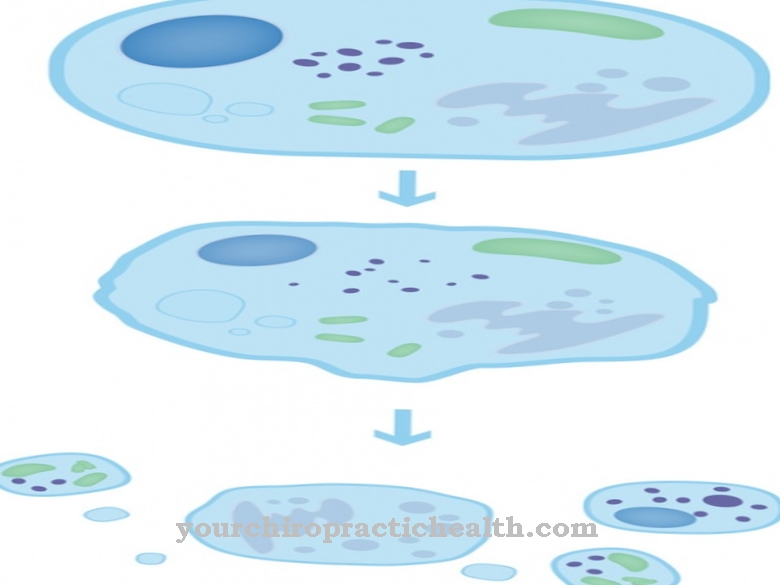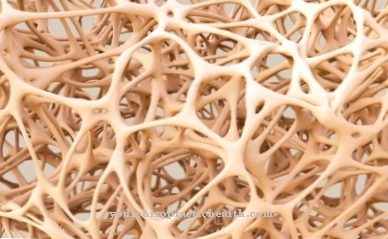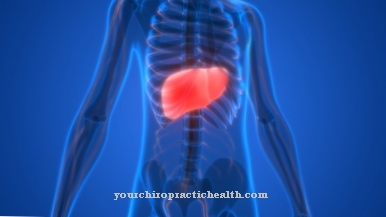The Sleep phase is a state between sleeping and waking, which is known as the first stage of sleep and relaxes both the body and the mind of the person in order to let the person pass into a restful sleep.
During the falling asleep phase, the sleeper still reacts to external stimuli and thus sometimes scares up again from sleep, but during this stage the pulse rate, breathing and brain activity of the sleeper already slow down, which is due to the production of the sleep hormone melatonin in the Pineal gland.
If the sleep phase lasts longer than around 20 minutes, there is usually a sleep disorder, which in this form is often due to increased caffeine consumption, excessive emotional excitement or extreme physical exertion.
What is the sleep phase?

Sleep medicine understands the sleep phase as the first stage of sleep. This stage is followed by the light sleep phase, the two phases of deep sleep and the dream phase, also known as REM sleep.
This means that falling asleep is the easiest sleep stage ever and is best understood as a state between waking and sleeping. The sleeper still perceives the noises and visual or tactile stimuli around him during the sleep phase, but his breathing becomes more regular, his brain waves run slower, his pulse slows down and his muscles relax.
Many people feel this relaxation in the form of twitching movements, in which the last tension is released from the body. Some also have the feeling of falling into an abyss while falling asleep. This feeling is mainly related to the organ of equilibrium, which can often be confused during the sleep phase.
Function & task
In the sleep phase, the entire body comes to rest and the path for the subsequent sleep phases is paved. The pineal gland also produces the sleep hormone melatonin. The production of this hormone begins as soon as the optic nerves transmit the perception of nocturnal circumstances to the hypothalamus.
In the sleep phase, the production of the sleep hormone reaches its climax and the sleeper is transferred into a state between being awake and sleeping. In this intermediate stage, hallucinations often appear, which sometimes startle the sleeper again and interrupt the sleep phase.
In contrast to the waking up phases, the sleeper does not consciously perceive the falling asleep phase. The sleep phase thus serves to lead you into actual sleep. It helps the sleeper to let go of the day and relax and go to sleep.
The sleep phase is therefore of great relevance for the general state of health of the person. Sleep serves for cell regeneration and the regeneration of organs, recharges the energies and processes the experiences of the day. Without falling asleep, none of this would be satisfactorily possible, because only a relaxed body can turn into a really restful sleep.
You can find your medication here
➔ Medication for sleep disordersIllnesses & ailments
On average, a healthy sleep phase lasts around 20 minutes. Latencies deviating from this can have a disease value and often indicate sleep disorders. This is especially true for chronically abnormal periods of sleep. On the other hand, values that deviate once are completely normal.
In particular, significantly longer chronic periods of falling asleep are often related to a sleep disorder. Often the sleep specialist speaks of insomnia in this context. In many cases, difficulty falling asleep and insomnia are characterized and therefore behavior-dependent.For example, some people need certain rituals to get to sleep because habit requires it.
In other cases, difficulty falling asleep has to do with the inability to let go of the past day and in this case it is a psychological phenomenon that may also be related to mental disorders. This form of sleep disturbance is often perceived by patients as an intolerable restriction of their own quality of life, since they often overtake tormenting thoughts while lying awake for hours.
Somewhat less often than a psychological cause, a sleep disorder is based on an actual physical phenomenon, for example an underproduction of the sleep hormone due to pathological pineal gland activity. Sometimes physical pain is causally related to falling asleep or the patient is treated with certain medications for an actual illness that makes it difficult for him to fall asleep.
Feelings of falling or other hallucinations during the sleep phase, however, have no disease value. This form of the disorder is known as myoclonia and affects around 70 percent of people over the course of a lifetime. If myoclonus occurs frequently or particularly intensely and thus regularly wakes the sleeper during the sleep phase, then emotional excitement, caffeine or heavy, physical work on the previous day are often related to the phenomenon. This form of sleep disorder is also harmless and does not need further investigation.
Exercising just before bed can cause problems falling asleep. Therefore, experts advise not to put sports activities in the evening hours if possible. If the patient feels tired during the day due to problems falling asleep or is otherwise impaired in his daily routine, then under certain circumstances monitoring in a sleep laboratory can be useful. An EMG can measure the potential during the sleep phase as part of a sleep laboratory visit and analyze it for abnormal phenomena.













.jpg)

.jpg)
.jpg)











.jpg)